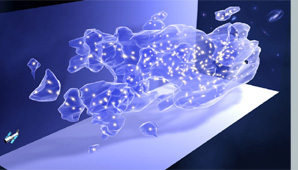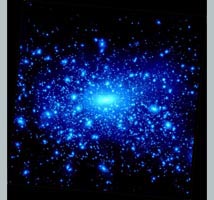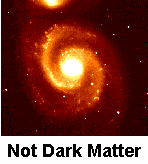 |
||
|
|
 |
|
|
ESA / Hubble Dark Matter Movie
Universe's Dark Matter Mix is 'Just Right' for Life It's not just the nature of dark matter that's a mystery - even its abundance is inexplicable. But if our universe is just one of many possible universes, at least this conundrum can be explained. The total amount of dark matter - the unseen stuff thought to make up most of the mass of the universe - is five to six times that of normal matter. This difference sounds pretty significant, but it could have been much greater, because the two types of matter probably formed via radically different processes shortly after the big bang. The fact that the ratio is so conducive to a life-bearing universe "looks like a tremendous coincidence", says Raphael Bousso at the University of California, Berkeley. Read more here.
Martin White's Dark Matter Tutorial: We believe that most of the matter in the universe is dark, i.e. cannot be detected from the light which it emits (or fails to emit). This is "stuff" which cannot be seen directly -- so what makes us think that it exists at all? Its presence is inferred indirectly from the motions of astronomical objects, specifically stellar, galactic, and galaxy cluster/supercluster observations. It is also required in order to enable gravity to amplify the small fluctuations in the Cosmic Microwave Background enough to form the large-scale structures that we see in the universe today. Read more
Nature News Dark matter looks to be particularly wimpy
BCCP cosmologists Hitoshi Murayama and Lawrence Hall are working to produce candidates for the composition of dark matter. Bernard Sadoulet's group, Cryogenic Dark Matter Search (CDMS) is working to identify dark matter. Using state-of-the-art cryogenic germanium and silicon detectors, the CDMSII collaboration is searching for weakly-interacting massive particles, or WIMPS, whose discovery could resolve the dark matter problem - revolutionizing particle physics and cosmology. Analyzing consequences of dark matter's presence as a skeleton for all the structure we see in the universe are Joanne Cohn, Chung-Pei Ma, Nikhil Padmanabhan, David Schlegel, & George Smoot.
|




